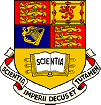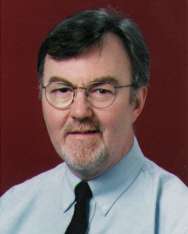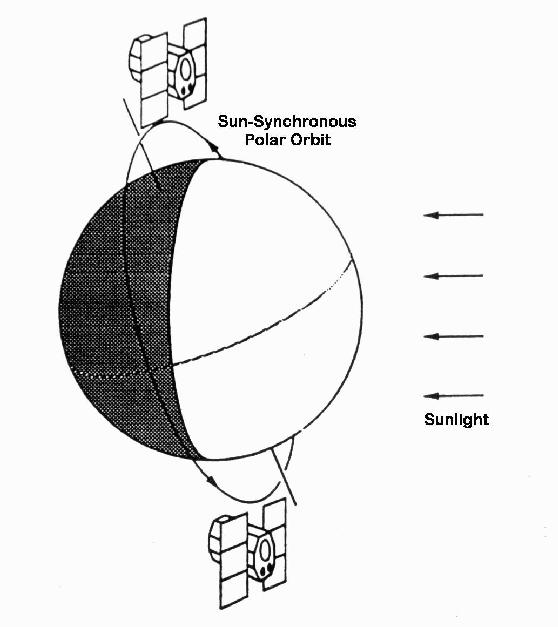
 |
|
News Page |

February 1999 |
This month's news stories:IOP Award to John HarriesCluster-II News Solar-B Instruments Announced |
 1999
Institute of Physics Award to Professor John Harries
1999
Institute of Physics Award to Professor John HarriesThe members of the Space and Atmospheric Physics Group warmly congratulate Professor John Harries on the award of the 1999 Charles Chree medal and prize of the Institute of Physics. The following is an extract from the Institute Matters of the IoP, profiling the winner of this prestigious prize.
"John Harries of the Space and Atmospheric Physics Group has been awarded the Charles Chree medal and prize for over 30 years of distinguished contributions to infrared spectroscopic studies of the Earth's atmosphere and climate change, having developed novel experimental techniques and sensitive detectors that allow global measurements to be made by satellites. Much of his work has been characterised by forward planning, in which he has displayed foresight, courage and perseverance.
John Harries began his scientific career at the National Physical Laboratory in 1967, and moved to the Appleton Laboratory in 1980. After a series of promotions within Appleton and the merged Rutherford Appleton Laboratory (RAL), he became head of the space science department. He carried out research in remote sounding, and was involved with two important NASA experiments. These were LIMS, the first limb-sounding infrared instrument, which used detectors cooled to liquid nitrogen temperatures, and HALOE. The latter was used to observe ozone and halogen compounds in the atmosphere, and has provided a stream of unique data that will occupy many scientists for years to come.
Now the Chair of Earth Observation at Imperial College, John Harries is using the data from HALOE to model the depletion of stratospheric ozone and to study the influence of atmospheric constituents on the radiation balance of the Earth. This research is likely to have a significant impact on the understanding of the "greenhouse" effect. In his time at Imperial, John has built up a sizeable research group with a substantial international reputation. His stature as an atmospheric scientist is confirmed nationally by his recent presidency of the Royal Meteorological Society, and internationally by his election as chair of the International Radiation Commission."
André Balogh 22nd January 1999
 CLUSTER-II NEWS
CLUSTER-II NEWSThe Imperial College Cluster team (Chris Carr, Julian Harris and Patrick Brown) delivered the first of four new Flight Models of of the FGM instrument to the Prime Contractor, Dornier Satellitensysteme GmbH, in Friedrichshafen, Germany. The instrument was then successfully integrated on the flight spacecraft in mid-December 1998. The picture on the right shows the FGM sensors and electronics box from the first Flight Model.
In the meantime, the second new Flight Model was assembled and tested in Imperial College, from sub-units built at Imperial College, at the Institut fuer Geophysik und Meteorology, Technische Universitaet, Braunschweig, Germany, at the Institut fuer Weltraumforschung, Graz, Austria, and at the Goddard Space Flight Center, Greenbelt Md., USA.
On 20 January, this second new FGM instrument (in fact the seventh we built) was taken over to Braunschweig by Julian Harris and Patrick Brown for calibration in the IGM's Magnetsrode calibration facility. This will take two weeks, then the instrument will be carried back to Imperial College for further tests, including the thermal vacuum and vibration tests which will be carried out in the facilities of the Rutherford Appleton Laboratory.
This instrument will be delivered to Dornier in March. We then need to build and test another two Flight Models of the FGM and, in addition, we will refurbish the Flight Spare instrument left over from the Cluster-1 programme.
In the near future, we will begin (again) the preparations needed for the scientific exploitation of this uniquely important space mission. A meeting of the Cluster-II Principal Investigators (including André Balogh from Imperial College for the Magnetic Field Investigation) is taking place at the International Space Science Institute in Bern, Switzerland, in the week of 25 January to discuss and plan the scientific operations of the four-spacecraft mission. While the orbit of Cluster-II will be identical to what was to be the Cluster-I orbit, the operations will be conducted from a single ground station, but with a vastly increased data storage capability on the spacecraft than originally planned. These changes from the previous plans need to be incorporated into a new Master Science Plan for Cluster-II.
André Balogh 22nd January 1999
 Solar-B Instruments Announced
Solar-B Instruments AnnouncedThe Space and Atmospheric Physics group is one of six U.K. institutions participating in the UK/Japan/US Solar-B project. Solar-B is the next major solar observatory, and will be the first to observe the Sun at optical wavelengths from space. The UK is contributing the EUV Imaging Spectrometer (EIS), with a consortium led by Prof J.L. Culhane of MSSL. Other UK institutions providing hardware are RAL and the University of Birmingham. ICSTM, Cambridge and St Andrews are the three UK institutions with major science roles in the project. Dr Peter Cargill is the ICSTM investigator.
On December 22, NASA announced the US contributions to the project. The three instrument payload is:
* The EUV Imaging Spectrometer will be capable of measuring turbulence and mass motions at temperatures characteristic of the transition region, corona and solar flares. This will be provided by the UK and US.
* A diffraction-limited optical telescope, including a broad-band filter imager, a narrow-band filter imager and a spectro-polarimeter. This will be provided jointly by Japan and the US.
* A grazing incidence X-ray telescope that will provide full-Sun imaging of the X-ray solar corona. The instrument is an advanced version of the very succesful SXT instrument flown on Yohkoh. This will be provided by the US and Japan.
The mission is scheduled for launch in 2004, and science planning activities at all the UK groups are underway. These will be posted on the ICSTM and MSSL Solar-B web sites in due course.
Peter Cargill 26th January 1999
Return to Space and Atmospheric Physics home page